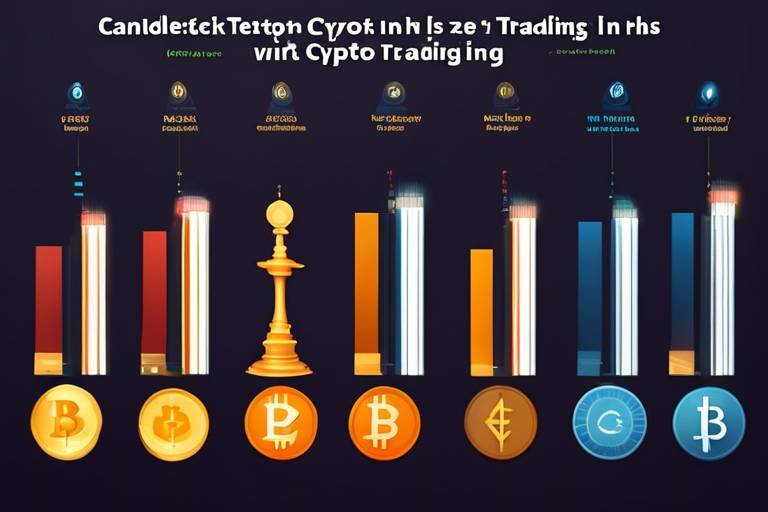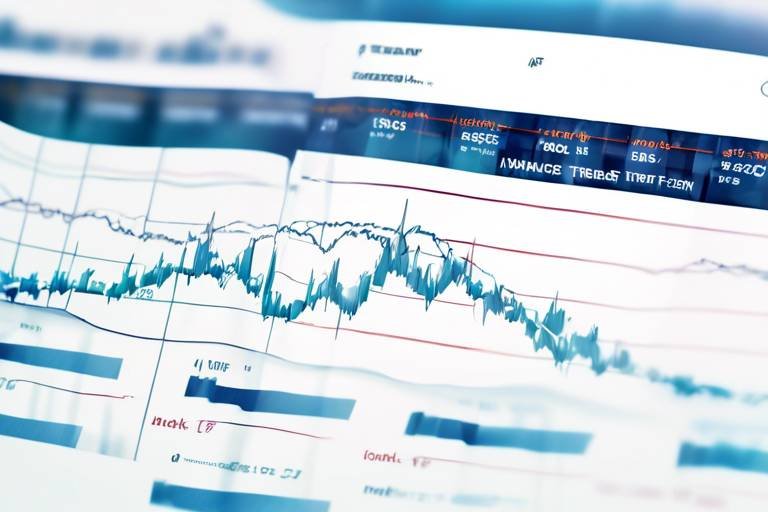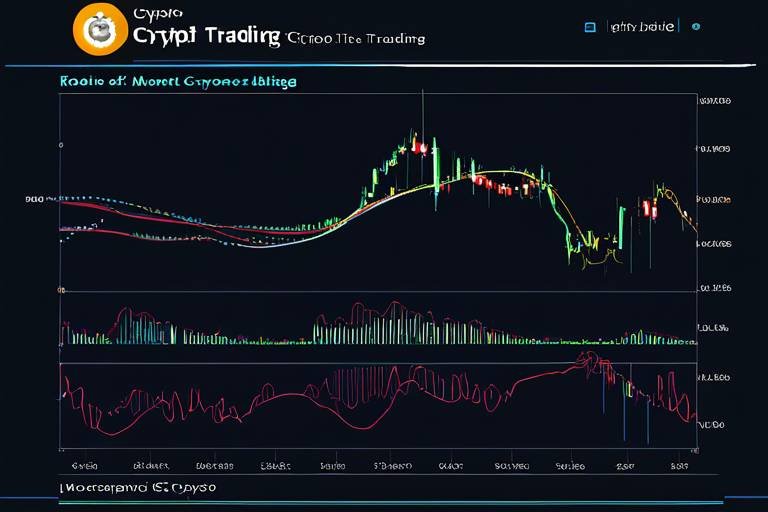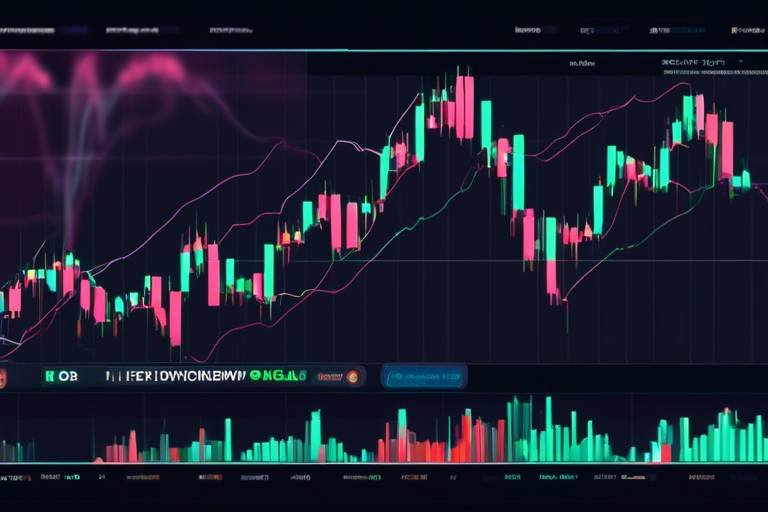The Basics of Charting Software for Cryptocurrency Trading
In the fast-paced world of cryptocurrency trading, having the right tools at your disposal can make all the difference. This is where charting software comes into play. Think of it as your trusty compass in the often turbulent waters of the crypto market. It helps you navigate through the waves of price fluctuations, market trends, and investor sentiments. But what exactly is charting software, and why is it so crucial for traders? Let's dive deeper into this essential tool and explore its significance.
Charting software is a specialized application designed to visualize market data through various types of charts, enabling traders to analyze price movements and identify potential trading opportunities. It’s like having a bird's eye view of the market, allowing you to see patterns and trends that might otherwise go unnoticed. With the right charting software, you can transform raw data into actionable insights, ultimately leading to more informed trading decisions.
One of the most fascinating aspects of charting software is its ability to present complex data in a digestible format. Imagine trying to read a novel without any punctuation; it would be a jumbled mess! Similarly, market data can be overwhelming if not organized properly. Charting tools break down this information into visual representations, making it easier for traders to spot trends, reversals, and potential entry or exit points. This visual clarity is essential, especially in the volatile world of cryptocurrency, where prices can swing dramatically in a matter of minutes.
Moreover, charting software often comes equipped with a variety of features that enhance the trading experience. From customizable indicators to real-time data updates, these functionalities allow traders to tailor their analysis to fit their unique strategies and risk tolerance. In the following sections, we will explore the key features of charting software and how they can elevate your trading game.
Charting software is essential for analyzing market trends and making informed trading decisions. This section explores what charting software is and its role in cryptocurrency trading.
When choosing charting software, several features are crucial. This section discusses the most important functionalities to look for, ensuring a comprehensive trading experience.
Real-time data is vital for effective trading. This subsection highlights the importance of having up-to-date information and how it impacts trading strategies.
Market depth analysis helps traders understand supply and demand. This part explains how this feature can enhance trading decisions and risk management.
Customizable indicators allow traders to tailor their analysis. This section discusses the significance of personalization in charting software for better trading outcomes.
Different chart types provide various insights into market behavior. This subsection explains the most common chart types used in cryptocurrency trading and their applications.
Integration with trading platforms streamlines the trading process. This section discusses how to effectively connect charting software with your trading accounts for optimal performance.
API connections facilitate seamless data transfer. This part explains how APIs work and their importance in linking charting software with trading platforms.
Mobile compatibility ensures traders can access charts on the go. This subsection discusses the advantages of using charting software on mobile devices for cryptocurrency trading.
As you navigate the world of cryptocurrency trading and charting software, you may have some questions. Here are a few frequently asked questions to help clarify common concerns:
- What is charting software used for? Charting software is used to analyze market data, visualize price movements, and assist traders in making informed decisions.
- Is real-time data important in cryptocurrency trading? Yes, real-time data is crucial as cryptocurrency prices can change rapidly, and timely information can significantly impact trading outcomes.
- Can I use charting software on my mobile device? Many charting software options offer mobile compatibility, allowing you to access charts and data on the go.
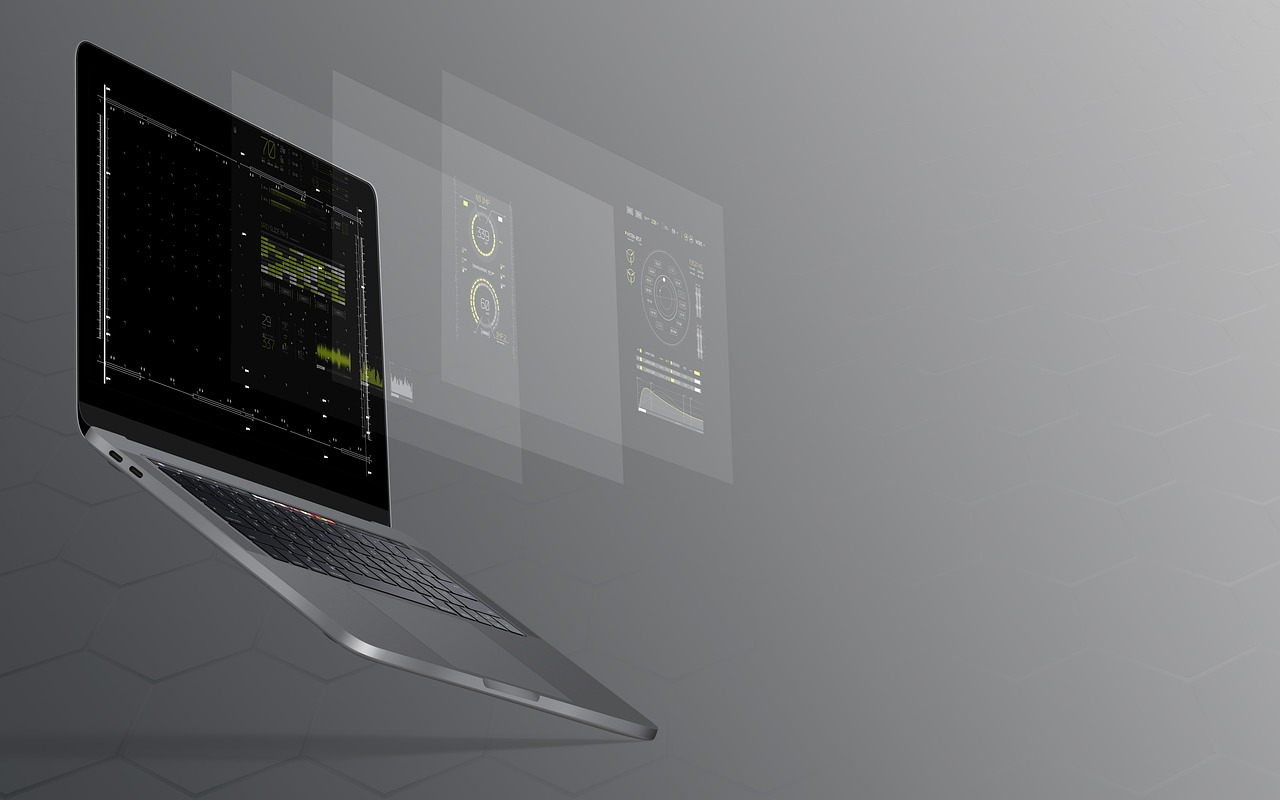
Understanding Charting Software
Charting software is an indispensable tool for anyone looking to delve into the world of cryptocurrency trading. Think of it as your personal navigator in the vast ocean of market trends and price movements. Just like a captain relies on maps and compasses to steer their ship, traders depend on charting software to analyze data and make informed decisions. But what exactly is charting software? At its core, it’s a program that allows you to visualize market data through various types of charts and indicators. This visualization helps traders spot trends, identify potential entry and exit points, and ultimately make smarter trades.
In the fast-paced world of cryptocurrency, where prices can fluctuate wildly within minutes, having access to reliable and accurate data is crucial. Charting software provides that edge, allowing traders to react swiftly to market changes. Imagine trying to catch a wave without a surfboard; that’s what trading without charting software feels like—risky and unpredictable. With the right software, you can track price movements, volume changes, and other essential metrics that influence trading decisions.
Moreover, charting software offers various features that enhance your trading experience. From technical indicators to customizable charts, these tools empower traders to tailor their analysis according to their unique strategies. Whether you are a day trader looking to capitalize on short-term price movements or a long-term investor assessing broader market trends, the right charting software can significantly impact your trading performance. In the following sections, we will explore the key features that make charting software a vital component of successful cryptocurrency trading.

Key Features of Charting Software
When diving into the world of cryptocurrency trading, having the right tools at your disposal can make all the difference. Charting software is not just a luxury; it's a necessity for traders looking to maximize their potential. But what exactly should you be looking for when selecting a charting tool? Let's explore some of the most essential features that can enhance your trading experience and help you make informed decisions.
First and foremost, real-time data updates are crucial. In the fast-paced environment of cryptocurrency markets, prices can fluctuate dramatically within seconds. Imagine trying to catch a wave while surfing—if you’re not paying attention to the tides, you might wipe out! Real-time data ensures you’re always riding the wave of market trends rather than getting caught off guard. This feature allows you to react instantly to market movements, providing a competitive edge that can significantly impact your trading success.
Another important aspect is market depth analysis. This feature gives you insights into the supply and demand for a cryptocurrency, allowing you to gauge market sentiment. Think of it as peering into a crowded room to see where the most activity is happening. By understanding where buyers and sellers are positioned, you can make better decisions about when to enter or exit a trade. Market depth charts display the order book, which shows you how many buy and sell orders are placed at various price levels. This information is invaluable for managing risk and timing your trades effectively.
Customization is also key in today’s trading landscape. Customizable indicators enable traders to tailor their analysis to fit their unique strategies and preferences. Whether you prefer moving averages, Bollinger Bands, or RSI, having the ability to adjust these indicators can lead to better trading outcomes. Imagine trying to read a book in a language you don’t understand—customizing your indicators allows you to read the market in a way that makes sense to you. This personalization fosters a deeper understanding of market dynamics, ultimately leading to more confident trading decisions.
Let’s not forget about the importance of chart types and visualization. Different chart types, such as candlestick, line, and bar charts, provide various insights into market behavior. Each type has its own strengths; for instance, candlestick charts can reveal patterns that indicate potential price movements, while line charts offer a clear view of price trends over time. Utilizing the right chart type for your analysis is like choosing the right lens for a camera—you want to capture the clearest picture possible. By understanding the different chart types and their applications, you can better interpret market signals and enhance your trading strategy.
In summary, the key features of charting software—real-time data updates, market depth analysis, customizable indicators, and diverse chart types—are all essential for any serious cryptocurrency trader. By leveraging these functionalities, you can gain valuable insights, make informed decisions, and ultimately improve your trading performance. Remember, the right tools can turn the tide in your favor, so choose wisely!
Q1: Why is real-time data so important in cryptocurrency trading?
A1: Real-time data is crucial because cryptocurrency prices can change rapidly. Having access to up-to-the-minute information allows traders to react quickly to market movements, which is essential for successful trading.
Q2: What is market depth analysis?
A2: Market depth analysis involves examining the order book of a cryptocurrency to understand the supply and demand dynamics. It helps traders gauge market sentiment and make better trading decisions based on where buyers and sellers are positioned.
Q3: Can I customize indicators in charting software?
A3: Yes! Most modern charting software allows you to customize indicators according to your trading strategy. This personalization helps you analyze the market in a way that fits your unique approach.
Q4: What are the different types of charts used in cryptocurrency trading?
A4: The most common types of charts include candlestick charts, line charts, and bar charts. Each type provides different insights into market behavior, so it's essential to choose the one that best suits your analysis needs.

Real-Time Data Updates
In the fast-paced world of cryptocurrency trading, having access to is not just a luxury; it's a necessity. Imagine trying to catch a wave while surfing, but you can only see the ocean’s surface a few minutes behind. That’s how detrimental it can be to trade without the latest market information. Real-time data provides traders with the most current prices, volume changes, and market sentiments, allowing them to make informed decisions quickly.
When you’re trading cryptocurrencies, every second counts. The market can shift dramatically in a matter of moments, and being equipped with real-time data gives you a competitive edge. With this feature, traders can react instantly to market movements, whether it’s a sudden spike in price or a sharp decline. This immediacy helps in executing trades at favorable prices and can significantly enhance profitability.
Moreover, real-time data updates are crucial for implementing technical analysis. Traders often rely on indicators and chart patterns to predict future price movements. If the data is outdated, it can lead to poor decision-making. For instance, if you’re using a moving average to determine the trend, having real-time updates ensures that your calculations reflect the current market conditions, thus allowing for more accurate predictions.
Many charting software solutions offer various ways to display real-time data, such as:
- Live price feeds
- Real-time volume statistics
- Market sentiment indicators
These features not only enhance your trading experience but also contribute to better risk management. By being aware of the latest trends and movements, you can adjust your strategies accordingly, minimizing potential losses and maximizing gains.
In summary, real-time data updates are a cornerstone of effective cryptocurrency trading. They empower traders to stay ahead of the curve and make decisions based on the most accurate information available. Without it, you might as well be trading with one hand tied behind your back!

Market Depth Analysis
Market depth analysis is a powerful tool that provides traders with a deeper understanding of the cryptocurrency market's supply and demand dynamics. Imagine walking into a bustling marketplace where you can see not just the prices of goods, but also how many customers are waiting to buy or sell at various price points. This visual representation is what market depth analysis offers traders, allowing them to gauge the strength of price movements and anticipate potential reversals or continuations.
At its core, market depth refers to the market's ability to sustain relatively large market orders without impacting the price of the asset significantly. It is typically represented through a depth chart, which displays the buy orders (bids) and sell orders (asks) at different price levels. The depth chart showcases the liquidity of a cryptocurrency, indicating how much of the asset is available for purchase or sale at any given time. This is crucial for traders who want to make informed decisions based on the current market conditions.
Understanding market depth can significantly enhance your trading decisions and risk management strategies. For instance, if you notice a large number of buy orders at a particular price level, it may indicate strong support, suggesting that the price is unlikely to fall below that level. Conversely, if there are substantial sell orders, that might signal resistance, hinting that the price may struggle to rise above that point. This insight can help traders decide whether to enter or exit a position.
Here’s a breakdown of why market depth analysis is essential:
- Improved Decision-Making: By analyzing market depth, traders can make more informed decisions about when to buy or sell.
- Risk Management: Understanding where the liquidity lies helps traders set better stop-loss orders and manage their risk effectively.
- Anticipating Price Movements: Traders can identify potential price movements based on the order book's structure, allowing them to capitalize on market trends.
For those who are serious about cryptocurrency trading, leveraging market depth analysis can be the difference between making a profit or incurring losses. It’s like having a roadmap in a dense forest; without it, you might wander aimlessly, but with it, you can navigate confidently. As you dive deeper into the world of trading, incorporating market depth analysis into your strategy will undoubtedly sharpen your edge in this fast-paced environment.

Customizable Indicators
When it comes to cryptocurrency trading, having the ability to customize your indicators is like having a tailor-made suit; it fits perfectly to your needs and enhances your performance. empower traders to adapt their analysis tools according to individual trading strategies, market conditions, and personal preferences. This flexibility is crucial because no two traders approach the market in the same way. Just as a chef adjusts a recipe to suit their taste, traders can tweak their indicators to align with their unique trading style.
One of the standout features of customizable indicators is the ability to select from a variety of technical analysis tools. For instance, traders can choose from moving averages, Bollinger Bands, RSI (Relative Strength Index), and MACD (Moving Average Convergence Divergence) among others. Each of these indicators serves a different purpose and can be adjusted to reflect the trader's specific timeframe and market conditions. Imagine you’re a pilot adjusting your flight path based on real-time weather data—this is similar to how traders adjust their indicators based on market volatility and trends.
Moreover, many charting software platforms offer the ability to create custom indicators from scratch. This means that if a trader has a unique formula or a specific combination of indicators they believe will enhance their trading strategy, they can input that directly into the software. This level of personalization can be a game-changer, allowing traders to identify patterns and signals that others might overlook. In a world where every second counts, having the right indicators at your fingertips can make all the difference.
Additionally, the visualization of these indicators plays a significant role in how traders interpret data. Customizable indicators often come with options to change colors, styles, and even the way they are displayed on charts. This means that if a trader finds certain colors easier to read or specific styles more intuitive, they can adjust their indicators accordingly. The end result is a personalized trading environment that enhances focus and clarity, much like how a well-organized workspace boosts productivity.
In summary, the ability to customize indicators not only enhances the trading experience but also significantly improves decision-making capabilities. It allows traders to create a tailored toolkit that resonates with their trading philosophy. As you explore different charting software options, remember that the best tools are those that adapt to you, not the other way around. The right customizable indicators can be the key to unlocking your trading potential, helping you navigate the ever-changing landscape of cryptocurrency markets with confidence.

Chart Types and Visualization
When it comes to cryptocurrency trading, the way you visualize data can make all the difference. Think of chart types as different lenses through which you can view market movements. Each type offers unique insights, helping you decode the often chaotic world of crypto. So, what are the primary chart types that traders rely on? Let's dive into the most popular ones.
The first and perhaps the most commonly used chart type is the line chart. This simple yet effective visualization connects closing prices over a specified period, creating a clear and concise picture of price trends. Imagine drawing a line that tracks the rise and fall of a roller coaster; that's what a line chart does for your trading data. It’s particularly useful for identifying long-term trends, though it might lack the granularity needed for short-term trading decisions.
Next up is the bar chart. Unlike the line chart, a bar chart provides more detail by showing the open, high, low, and close prices for a specific time frame. Each bar represents a time interval, and the height of the bar indicates price movement. This type of chart is like a snapshot of a trader's day: it shows not just where the price ended up, but how it got there. Traders often use bar charts to gauge volatility and make more informed decisions.
Then we have the candlestick chart, which is a favorite among many traders for its visually appealing design and rich information. Each candlestick represents a time period and contains the same data as a bar chart but in a more digestible format. The body of the candlestick shows the open and close prices, while the wicks (or shadows) illustrate the high and low prices. This chart type is like reading a story; it tells you not just what happened, but also the emotions behind the price movements. If you see a long wick, for example, it might indicate indecision in the market.
For the more analytical traders, point and figure charts provide a unique approach by focusing solely on price movements without considering time. These charts are composed of X's and O's, where X's indicate rising prices and O's indicate falling prices. This method filters out the noise and allows traders to concentrate on significant price changes. It’s akin to finding the signal amid the static; for those who prefer simplicity, point and figure charts can be a breath of fresh air.
Lastly, let's not forget about volume charts. While they may not depict price movements directly, they are crucial for understanding the strength behind a price trend. Volume charts show how much of a cryptocurrency is being traded over a certain period. High volume often indicates strong interest and can validate price movements, making them a valuable tool in any trader's arsenal. Think of it as the heartbeat of the market; if the volume is strong, the price movement is likely to follow suit.
In summary, the choice of chart type can significantly influence your trading strategy. By understanding the strengths and weaknesses of each type, you can tailor your approach to fit your trading style. Whether you opt for the simplicity of line charts or the depth of candlestick charts, the key is to find the visualization that resonates with you and enhances your trading experience.
- What is the best chart type for beginners? Line charts are often recommended for beginners due to their simplicity and ease of understanding.
- How can I choose the right chart type for my trading strategy? Consider your trading goals—long-term trends might be better suited for line charts, while short-term trades could benefit from candlestick or bar charts.
- Are there any tools for creating these charts? Yes, many trading platforms and charting software provide built-in tools to create various types of charts tailored to your needs.

Integrating Charting Software with Trading Platforms
Integrating charting software with trading platforms is like finding the perfect partner in a dance—both need to move in sync for the best performance. When traders use charting software alongside their trading platforms, they can streamline their operations, making it easier to analyze data and execute trades quickly. This integration not only enhances the trading experience but also allows for a more efficient decision-making process. Imagine having real-time data and analytics at your fingertips while you trade; it’s like having a personal assistant who knows the market inside and out!
One of the key benefits of this integration is that it allows traders to access comprehensive market data without switching between multiple applications. By connecting your charting software directly to your trading platform, you can view price movements, analyze trends, and execute trades all in one place. This seamless experience can significantly reduce the time it takes to react to market changes, which is crucial in the fast-paced world of cryptocurrency trading.
Let’s dive into some of the most effective ways to integrate charting software with trading platforms:
- API Connections: Many trading platforms offer API (Application Programming Interface) connections that allow charting software to pull in real-time data and send orders directly. This means you can automate your trading strategies based on the analysis you conduct on your charts.
- Custom Alerts: Integration often allows for setting custom alerts based on specific chart patterns or price movements. This feature can notify you when certain conditions are met, enabling you to act swiftly.
- Unified User Interface: A well-integrated system will provide a unified user interface, meaning you won’t have to juggle between different screens. Everything from your charts to your orders will be visible in one place, making it easier to maintain focus.
Moreover, mobile compatibility is a significant aspect of integration. With the rise of mobile trading, having your charting software accessible on smartphones and tablets means you can monitor your investments anywhere, anytime. Imagine sitting in a café, sipping your coffee, and being able to analyze market trends or make trades on the go. This flexibility is invaluable for traders who are always on the move!
In conclusion, integrating charting software with trading platforms is not just a luxury; it's a necessity for serious traders. It enhances efficiency, improves decision-making, and allows for a more cohesive trading experience. As the cryptocurrency market continues to evolve, staying ahead of the curve with the right tools will empower you to make the most informed trading decisions possible.
Q: What is charting software?
A: Charting software is a tool that allows traders to visualize market data through various types of charts, helping them analyze trends and make informed trading decisions.
Q: Why is integration important?
A: Integration allows traders to access real-time data and execute trades without switching between multiple platforms, enhancing efficiency and decision-making.
Q: Can I use charting software on my mobile device?
A: Yes, many charting software options are mobile-compatible, allowing you to trade and analyze market trends on the go.
Q: What are API connections?
A: API connections enable different software applications to communicate with each other, allowing for real-time data transfer and automated trading functionalities.

API Connections
When it comes to cryptocurrency trading, are like the invisible threads that weave together your charting software and trading platforms. Think of them as the bridges that allow data to flow seamlessly between different applications, ensuring that you have the most accurate and timely information at your fingertips. Without these connections, your trading experience can feel like trying to navigate through a foggy landscape—uncertain and fraught with risks.
APIs, or Application Programming Interfaces, serve as the backbone of this connectivity. They allow your charting software to pull real-time data from various exchanges, giving you a clear view of market trends and price movements. Imagine you’re a pilot flying through the clouds; you rely on instruments to guide you safely to your destination. Similarly, APIs provide the essential data that helps traders make informed decisions in an ever-changing market.
Integrating your charting software with trading platforms through API connections offers several advantages:
- Real-Time Data Transfer: APIs facilitate instantaneous updates, ensuring that you’re always working with the latest information.
- Automated Trading: Some traders utilize APIs to automate their trading strategies, allowing them to execute trades based on predefined criteria without manual intervention.
- Enhanced Analysis: With direct access to exchange data, your charting software can perform more sophisticated analyses, helping you identify patterns and trends that might not be visible otherwise.
Moreover, the ease of use of modern APIs means that you don’t need to be a coding wizard to take advantage of their capabilities. Most charting software comes with user-friendly interfaces that guide you through the integration process. This allows you to focus on what you do best—trading—rather than getting bogged down in technical details.
However, it's crucial to choose charting software that supports robust API connections. Not all platforms are created equal, and some may offer limited integration options. Therefore, when selecting your charting tool, consider the following:
| Feature | Importance |
|---|---|
| Supported Exchanges | Ensure that the software can connect to the exchanges you intend to trade on. |
| Data Accuracy | Look for software that has a reputation for providing reliable and accurate data through its APIs. |
| Ease of Integration | Choose platforms that offer straightforward integration processes with clear documentation. |
In conclusion, API connections are not just a technical feature; they are a vital component of a successful trading strategy. By leveraging the power of APIs, you can transform your trading experience from a simple endeavor into a sophisticated operation that adapts to market changes in real time. So, as you navigate the exciting world of cryptocurrency trading, remember that the right API connections can be your secret weapon in achieving trading success.
- What is an API in cryptocurrency trading? An API (Application Programming Interface) allows different software applications to communicate with each other, enabling data exchange and functionality integration.
- How do I integrate API connections? Most charting software provides documentation and user-friendly interfaces to guide you through the integration process with your trading platform.
- Can I automate my trading using APIs? Yes, many traders use APIs to automate trading strategies, allowing for trades to be executed based on specific criteria without manual input.

Mobile Compatibility
In today's fast-paced world, where everything is just a tap away, has become a game-changer for cryptocurrency traders. Imagine being able to monitor your investments while waiting in line for coffee or during your daily commute. This level of accessibility is not just a luxury; it’s a necessity for those who want to stay ahead in the volatile crypto market.
When selecting charting software, ensure it offers a robust mobile platform. This means the software should not only be accessible via mobile devices but also optimized for smaller screens. A well-designed mobile interface allows traders to analyze charts, place orders, and receive real-time alerts without being tethered to a desktop. The ability to perform these actions on the go can significantly enhance trading efficiency.
Moreover, mobile compatibility often includes features like push notifications for price alerts, news updates, and even social trading options. These features allow traders to react swiftly to market changes, ensuring they never miss a trading opportunity. For instance, if a cryptocurrency suddenly spikes in price, a trader can quickly assess the situation and decide whether to buy or sell, all from their smartphone.
However, not all mobile charting software is created equal. Some may have limited functionalities compared to their desktop counterparts. When evaluating mobile options, consider the following:
- User Experience: The app should be intuitive and easy to navigate, allowing for quick access to charts and trading options.
- Performance: Look for apps that load quickly and provide real-time data without lagging.
- Security: Ensure that the mobile platform has robust security measures in place to protect your sensitive information.
In conclusion, mobile compatibility is not just an added bonus; it’s a critical feature that can make or break your trading strategy. By choosing charting software that prioritizes mobile functionality, you can trade with confidence, knowing that you have the tools you need at your fingertips, no matter where you are.
Q: Why is mobile compatibility important for cryptocurrency trading?
A: Mobile compatibility allows traders to access their charts and make trading decisions on the go, ensuring they can react quickly to market changes.
Q: What features should I look for in mobile charting software?
A: Look for user-friendly interfaces, real-time data updates, performance speed, and strong security measures.
Q: Can I perform all trading functions on mobile charting software?
A: While many mobile apps offer comprehensive functionalities, some may have limited features compared to desktop versions. It's essential to evaluate each app's capabilities.
Frequently Asked Questions
-
What is charting software and why is it important for cryptocurrency trading?
Charting software is a tool that helps traders analyze market trends and make informed decisions. It's crucial in cryptocurrency trading because it provides visual representations of price movements, allowing traders to spot patterns and trends that might not be obvious otherwise. Think of it as your roadmap in the chaotic world of crypto!
-
What key features should I look for in charting software?
When selecting charting software, consider features like real-time data updates, market depth analysis, and customizable indicators. These functionalities ensure that you have the most accurate information at your fingertips, allowing you to tailor your trading strategies effectively. It’s like having a personalized trading assistant!
-
How does real-time data impact my trading strategy?
Real-time data is essential because cryptocurrency markets can change rapidly. Having access to the latest information allows you to react quickly to market movements, making your trading more effective. Imagine trying to catch a wave; you need to be in the right spot at the right time!
-
What is market depth analysis and how can it help me?
Market depth analysis provides insights into the supply and demand for a cryptocurrency by showing the number of buy and sell orders at various price levels. This feature can enhance your trading decisions by helping you gauge market sentiment and potential price movements. It’s like having a crystal ball for market trends!
-
Why are customizable indicators important?
Customizable indicators allow traders to personalize their analysis based on their trading style and preferences. This means you can set up your charts in a way that makes the most sense to you, improving your chances of making successful trades. It’s all about finding what works best for you!
-
What types of charts are commonly used in cryptocurrency trading?
Common chart types include line charts, bar charts, and candlestick charts. Each type offers different insights into market behavior. For instance, candlestick charts can show you price action within specific time frames, making them a favorite among traders. It’s like choosing the right tool for the job!
-
How can I integrate charting software with my trading platform?
Integration is typically done through API connections, which allow seamless data transfer between your charting software and trading platform. This means you can execute trades directly from your charts, streamlining your trading process. It’s the perfect marriage of convenience and efficiency!
-
Is mobile compatibility important for charting software?
Absolutely! Mobile compatibility ensures you can access your charts and make trades on the go. This flexibility is crucial in the fast-paced world of cryptocurrency trading, where opportunities can arise at any moment. Think of it as having a trading desk in your pocket!



